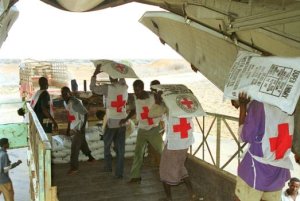Natural disasters often lead to mass injuries and even casualties. Natural disasters such as earthquakes, floods, tsunamis, volcanic eruptions, hurricanes and tornadoes can occur anywhere and anytime. In many cases, adequate preparation and early planning prior to such natural calamities are the best-laid foundation in combating natural disasters.
In the event of natural disasters, loss of communication, potable drinking water, and electricity are among the most common obstacles faced by even the most well-coordinated emergency response. Even with the advent of wireless communication and technology such as mobile/cellular phones, computers and other similar devices, the effects of natural calamities can be profound inflicting structural damages even for the most developed countries.
Natural Disasters and the Health Care Sector
The majority of the immediate casualties is often trauma related which is a result from the effects of natural disasters and calamities. These mass casualties heavily burden the trauma system of any given health care facility to its limits in providing triage, transport of victims especially in poor weather and road conditions , and exacerbate already difficult conditions within the trauma facility of a hospital or designated medical evacuation sites.
In some instances, early warning systems are very vital in assisting the health care sector in anticipating and properly bracing itself from the surge of victims and mass casualties from unprecedented natural calamities. Larger scale issues that can cause substantial morbidity and mortality include the healthcare facility’s water purification, waste removal, removal of human and animal remains and vector control. Moreover, the proper and safe disposal of biologic, chemical and nuclear agents must also be considered.
Structural and Medical Effects of Natural Disasters
Excessive exposure to the natural elements following the onset of natural 
Anticipating Common Ailments During Natural Disasters
In addition to keeping track of the possible problems during natural calamities, the healthcare sector and its emergency response team must be prepared in treating common natural ailments experienced to a specific natural disaster. For example, during the onset of a volcanic eruption, pulmonary problems often peak due to the increased particulate matter in the atmosphere. Moreover, acute death resulting from volcanic eruptions is primarily caused by suffocation. Flash floods or water disasters lead to an increase in waterborne transmission of agents such as Escherichia coli, salmonella, typhoid, leptospirosis and malaria are common which causes widespread diseases among victims during flood related natural disasters.
